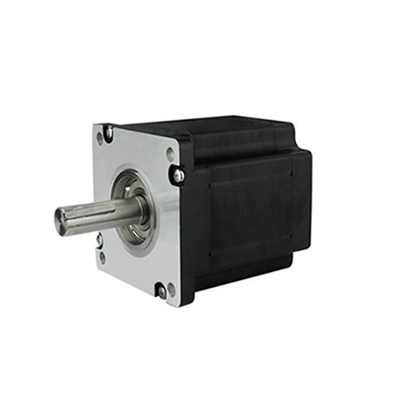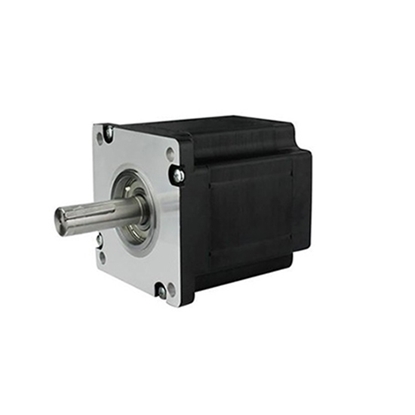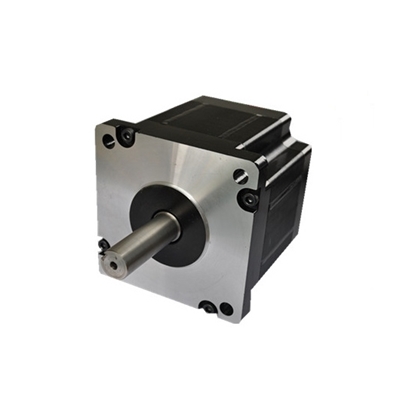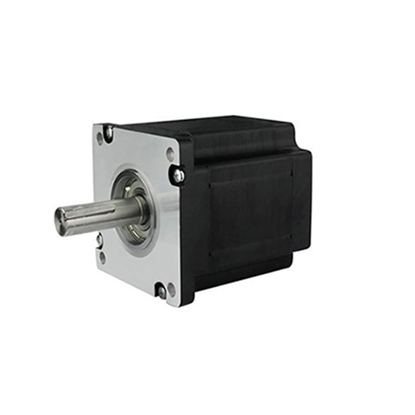- Home
-
Motors
-
Motor Controls
- Power Supplies
-
Passive Components
- Back
- Capacitors
- Circuit Breakers
- Connectors
-
Resistor
- Back
- Metal Film Resistor
- Contactors
- Current Transformer
- DIP Switch
- Electronic Ballast
- Filters
- Float Valves
- Foot Switch
- Forward Reverse Switch
- Fuse
- Hook-Up Wire
- Indicator Light
- Isolator Switch
- Junction Box
- Joystick Switch
- Knife Switch
- LED Machine Light
- Laser Module
- Locking Plugs
- Low Noise Amplifiers
- Magnetic Starter
- Micro Switch
- Over Voltage Protector
- PV Combiner Box
-
Potentiometer
- Back
- Rotary Potentiometer
- Potential Transformer
- Pressure Switch
- Push Button
- Rectifier
- Relays
- RF Attenuators
- Rocker Switch
- Rotary Switch
- Surge Protection Devices
- Tact Switch
- Terminal Block
- Timer Switch
- Toggle Switch
- Transfer Switches
-
Sensors
- Back
- Accelerometer Sensor
- Angle Sensor
- Air Quality Sensor
- Color Sensor
- Compass Sensor
- Conductivity Sensor
- Current Sensor
- Dew Point Sensor
- Displacement Sensor
- Encoder
- Fiber Sensor
- Flow Switch
- Float Switch
- Gyroscope Sensor
-
Gas Sensor
- Back
- CO Sensor
- CO2 Sensor
- O2 Sensor
- IMU Sensor
- Inclinometer Sensor
- Ion Selective Electrode
- Load Cell
- Load Cell Transmitter
- Level Sensor
- Laser Sensor
- Limit Switch
- Light Curtain
- Label Sensor
- Magnetic Cylinder Sensor
- Noise Sensor
- Power Transducer
- Proximity Sensor
- pH Electrode
- Pressure Sensor
- PM Sensor
- Presence Sensor
- Photoelectric Sensor
- Radiation Sensor
- Reference Electrode
- Rain Sensor
- Signal Isolator
- Safety Switch
- Strain Gauge
- Speed Sensor
- Soil Moisture Sensor
- Temperature Sensor
- Temperature and Humidity Sensor
- Torque Sensor
- Ultrasonic Sensor
- Voltage Sensor
- Vibration Transmitters
- Water Leakage Sensor
- Water Quality Sensor
- Wind Sensor
-
Test & Measurement
- Back
- Anemometer
- Air Quality Monitor
- Clamp Meter
- Crane Scale
- Colorimeter
- Current Transformer Tester
- Conductivity Meter
- Digital Panel Meter
- Digital Counter
- Digital Readout
- Dew Point Meter
- Digital Inclinometer
- Digital Torque Adapters
- Density Meter
- Distance Meter
- Dynamometer
- Digital Tachometer
- Digital Indicator
- Dielectric Oil Tester
- Diameter Gauge
- Energy Meter
- Earth Resistance Tester
- Electronic Analytical Balance
- Electronic Load
- Electronic Compass
- Flow Meters
- Function Generator
- Force Gauge
- Feeler Gauges
- Gas Detectors
- Gloss Meter
- Gauss Meter
- Hipot Tester
- Hardness Tester
- Height Gauges
- Handheld Ultrasonic Homogenizer
- Infrared Thermometers
- Insulation Tester
- Linear Scale
- LCR Meter
- Laser Levels
- Lux Meter
- Land Meter
- Moisture Meter
- Multimeter
- Metal Detector
- Measuring Wheel
- Micrometers
- Measuring Tapes
- Nuclear Radiation Detector
- Network Cable Tester
- Oscilloscopes
- Optical Time Domain Reflectometer
- Oil Tank Gauge Tape
- pH Meter
- Paperless Recorder
- Pressure Gauge
- Particle Counter
- Power Meter
- Power Meter Plug
- Protractor
- Pipe Blockage Detector
- Particle Size Analyzer
- Relay Tester
- Refractometer
- Rebound Hammer
- Rebar Scanner
- Spectrophotometers
- Sound Level Meter
- Smoke Detector
- Solar Power Meter
- Surface Roughness Tester
- Signal Generator
- Stud Finder
- Temperature Controller
- Temperature Data Logger
- Thickness Gauge
- Tension Meters
- Turbidity Meter
- USB Tester
- Viscometer
- Vibration Meter
- Vernier Caliper
- Volt Amp Meter
- Water Quality Tester
- Water Leakage Detectors
- Weighing Indicator
-
Transmission & Actuator
- Back
- Air Filters
- Air Hose Fittings
- Angle Seat Valves
- Ball Valves
- Bearings
- Brakes and Clutches
- Butterfly Valves
- Check Valves
- Control Valves
- Diaphragm Valves
- Door Opener
- Drag Chain
- Expansion Joints
- Filling Valve
- FRL Unit
- Gate Valves
- Gearbox
- Globe Valves
- Hand Valves
- Hydraulic Accumulators
- Hydraulic Actuator
- Hydraulic Cylinders
- Linear Actuators
- Linear Rail
- Linear Slide
- Needle Valves
- Pinch Valves
- Plug Valves
- Plunger Valves
- Pneumatic Cylinders
- Pneumatic Foot Pedal
- Pressure Regulator
- Pressure Relief Valves
- Pulse Valves
- Quick Connector
- Quick Exhaust Valves
- Shaft Coupling
- Shuttle Valves
- Slip Ring
- Solenoid Valves
- Steam Traps
- Strainers
- Torque Limiters
- Universal Couplings
- Vacuum Generator
- Valve Actuators
- Vent Plug
-
Pumps
- Back
- Aerator Pump
- Booster Pump
- Bilge Pump
- Centrifugal Pump
- Dosing Pump
- Diaphragm Pump
- Fire Pump
- Gear Pump
- Hydraulic Pump
- Hot Oil Pump
- Lobe Pump
- Lubrication Pump
- Magnetic Drive Pump
- Mud Pump
- Peristaltic Pump
- Piston Pump
- Pool Pump
- Rotary Hand Pump
- Screw Pump
- Self Priming Pump
- Sewage Pump
- Sliding Vane Pump
- Vacuum Pump
- Well Pump
- Wing Pump
-
Tools
- Back
- Alarm & Siren
- Beam Trolley
- Beam Clamp
- Blower
- Centrifuge Machine
- Circular Saws
- Cable Cutter
- Crimping Tool
- DC Cooling Fan
- Desoldering Tool
- Endoscope
- Electric Pressure Washer
- Foam Cutter
- Flange Spreader
- Flashlight
- Generator
- Glass Lined Reactor
- Heat Exchanger
- Hydraulic Punch
- Hoist
- Heat Gun
- Hydraulic Puller
- Hydrothermal Synthesis Reactor
- Impact Wrenches
- Inkjet Printer
- Jack
- Lifting Hook
- Labour Protection Appliance
- Magnetic Stirrer
- Magnetic Sweepers
- Portable LED Work Light
- Pipettes
- Pneumatic Screw Driver
- Plate Clamp
- Pneumatic Drill
- Pipe Bender
- Rubber Sheets
- Reciprocating Saw
- Rebar Tool
- Rotary Evaporator
- Sander
- Screw Feeder
- Soldering Tool
- Safety Mat
- Snatch Block
- Spring Balancer
- Strapping Tool
- Wire Stripper
- Winch
-
Communication & Controller
-
Industrial Equipment
- Back
- Air Compressors
- Chamfering Machines
- CNC Router Machine
- Dryer
- Dehumidifier
- Fume Extractor
- Fan Heater
- Industrial Cameras
- Industrial Vacuum Cleaner
-
Laser Machines
- Back
- Laser Marker
- Oil Mist Eliminators
- SCARA Robot
- Static Eliminator
- Steam Autoclave Sterilizer
- Tool Setter
- Ultrasonic Cleaner
- Water Chiller
- Welding Machine
- Water Purification System
- Technical Support
- How To Buy
- Contact
- Chat
- ATO /
- Motors /
- Stepper Motors /
- NEMA 42 Stepper Motors
NEMA 42 Stepper Motors
3 phase Nema 42 Stepper motor, 5A, 1.2 degree, 6 wires
High Torque Nema 42 Stepper motor, 6A, 1.2 degree, 3 phase
Nema 42 Bipolar Stepper motor, 6A, 2 phase 4 wires
Nema 42 Stepper motor, 4A, 1.2 degree, 3 phase 6 wires
Nema 42 Stepper motor, 4A, 1.8 degree, 2 phase 4 wires
ATO offers two series of NEMA 42 stepper motors: One is 2 phase 4 wires bipolar nema 42 stepper motor with 1.8 degree step angle, another one is 3 phase 6 wires nema 42 stepper motor with 1.2 degree step angle. They provide high holding torque in many industrial applications. The price we present to you will be lower than other online shops.
Stepper motor FAQs
What is holding torque?
Holding torque refers to the torque at which the stator locks the rotor when the stepper motor is energized but not rotating. It is one of the most important parameters of the stepper motor, usually the torque of the stepper motor at low speed is close to the holding torque. Since the output torque of the stepper motor decreases with the increase of speed, and the output power also changes with the increase of speed, the holding torque has become one of the most important parameters to measure the stepper motor. For example, when users need a 2N.m stepper motor, they refer to a stepper motor with a holding torque of 2N.m unless otherwise specified.
What is detent torque?
Detent torque refers to the torque at which the stator locks the rotor when the stepper motor is not energized.
How accurate is the stepper motor? Does it accumulate?
Generally, the accuracy of the stepper motor is 3-5% of the stepping angle, and it does not accumulate.
What is the allowable surface temperature of the stepper motor?
If the temperature of the stepper motor is too high, the magnetic material of the motor will be demagnetized, resulting in a decrease in torque and even loss of step. Therefore, the maximum temperature allowed on the surface of the stepper motor should depend on the demagnetization point of the magnetic material. Generally speaking, the demagnetization point of the magnetic material is above 130℃, and some are even as high as 200℃, so the surface temperature of the stepper motor is completely normal at 80-90℃.
Why does the torque of the stepper motor decrease as the speed increases?
When the stepper motor rotates, the inductance of each phase winding of the motor will form a back electromotive force. The higher the frequency, the greater the back electromotive force. Under its action, the phase current of the motor decreases as the frequency (or speed) increases, resulting in a decrease in torque.
How to reduce the vibration and noise of the 2 phase hybrid stepper motor at low speed?
- If the stepper motor just works in the resonance area, you can avoid the resonance area by changing the mechanical transmission such as the reduction ratio.
- Adopt the driver with subdivision function, which is the most commonly used and easiest method.
- Change to a stepper motor with a smaller step angle, such as a 3 phase or 5 phase stepper motor.
- Switching to AC servo motor can almost completely reduce vibration and noise, but the cost is higher.
- Add a magnetic damper to the motor shaft.
- +1 800-585-1519 (Toll-free)
- sales(at)ato.com
- Global Shipping









